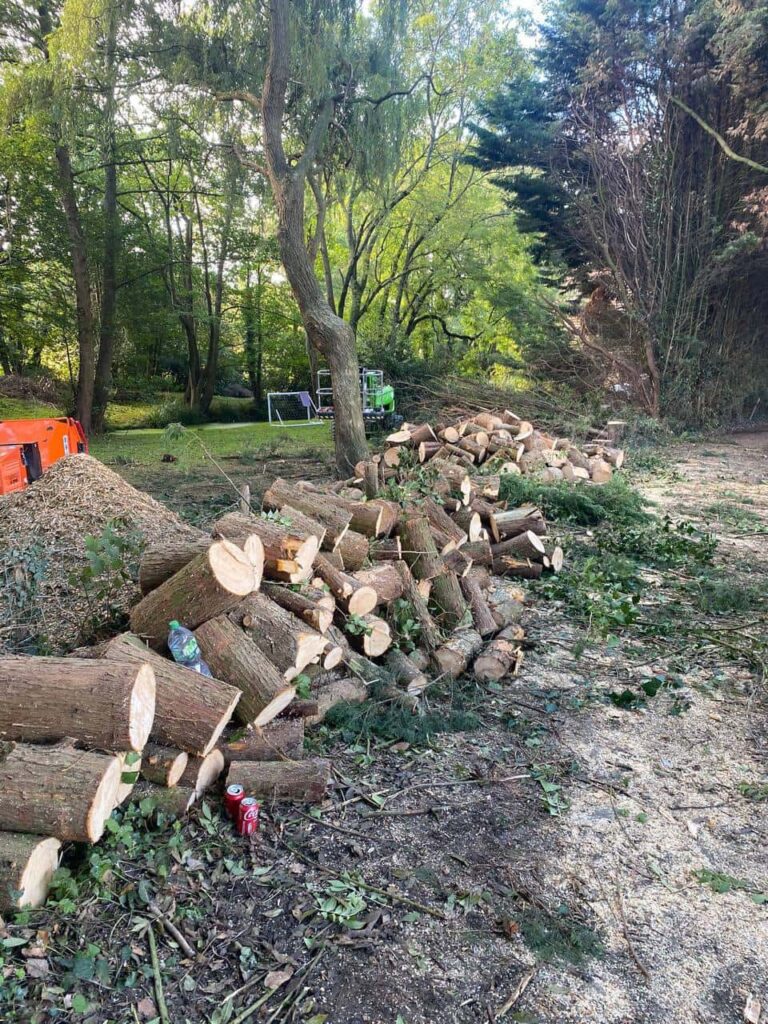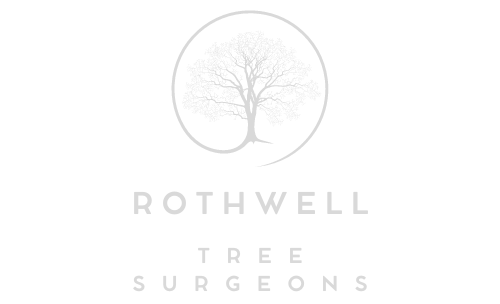Signs You’ve Over-Reduced a Tree’s Crown: What to Watch
Crown reduction is one of the most common and effective tree surgery techniques used to manage tree size, balance, and health. When carried out correctly, it helps reduce wind resistance, allows more light through, and ensures structural stability. However, when overdone, crown reduction can cause serious harm to the tree’s health and appearance. At Rothwell Tree Surgeons, we’ve seen first-hand how over-reduction can compromise a tree’s vitality, which is why understanding the warning signs is essential for homeowners in Rothwell, Northamptonshire.
Understanding Crown Reduction
Crown reduction involves selectively trimming branches from the top and outer sections of a tree to reduce its height or spread. The goal is to achieve a natural, balanced shape while maintaining the tree’s strength and growth potential.
When done professionally, this technique removes only a modest percentage of the canopy — typically between 10% and 30% — allowing the tree to recover and continue thriving. Over-reduction, however, occurs when too much foliage or branch structure is removed, leaving the tree vulnerable to stress and decline.
Key Signs You’ve Over-Reduced a Tree’s Crown
1. Sparse or Patchy Foliage
One of the first indicators of over-reduction is a noticeable thinning of the canopy. When too many branches are removed, the tree struggles to photosynthesise effectively, resulting in sparse or patchy foliage. The tree may take years to recover, and in some cases, the damage can be permanent.
2. Rapid, Weak Regrowth
When a tree experiences excessive cutting, it often reacts by producing a flush of new shoots — known as epicormic growth. These shoots grow quickly but are structurally weak, attaching poorly to the main branches. Over time, this weak regrowth can make the tree more prone to breakage and wind damage.
3. Sunscald and Bark Damage
Removing too much of the crown exposes previously shaded areas of bark and inner branches to direct sunlight. This sudden exposure can cause sunscald — a condition where the bark becomes damaged, cracked, or blistered due to heat stress. Once the bark is compromised, it opens the tree to disease and decay.
4. Uneven Weight Distribution
Crown reduction should always maintain the natural shape and balance of the tree. Over-reduction often results in an uneven crown where one side is lighter than the other, placing strain on the trunk and main limbs. This imbalance can make the tree structurally unsound, especially during storms or high winds.
5. Declining Health and Dieback
If a tree’s crown has been excessively reduced, it may not have enough leaf area to sustain healthy growth. The lack of photosynthesis leads to gradual dieback, where branches start to wither and fail from the tips inward. This is often an irreversible process and a clear sign that the tree is struggling to recover.
6. Unnatural or Harsh Appearance
Professionally pruned trees should look balanced and natural. Over-reduction leaves behind a harsh, stubby appearance, with large branch cuts and missing sections of canopy. This not only detracts from the tree’s visual appeal but also affects the overall landscape aesthetic of your property.
Why Over-Reduction Happens
Over-reduction is usually the result of untrained or improper pruning practices. Common causes include:
- Removing too much foliage in a single session.
- Cutting branches back to unsuitable points rather than proper growth nodes.
- Attempting to control growth too aggressively rather than gradually over time.
- Using topping methods instead of professional crown reduction techniques.
At Rothwell Tree Surgeons, we always approach crown reduction with precision, ensuring each cut supports the tree’s structure, health, and longevity.
The Long-Term Effects of Over-Reduction
Over-reduction doesn’t just cause short-term stress — it can have lasting consequences for your tree’s safety and lifespan. The loss of too much canopy disrupts the tree’s energy production and compromises its ability to defend against pests and disease. Structurally, weakened branches and excessive regrowth can create instability, increasing the risk of falling limbs in the future.
In some severe cases, over-reduced trees never fully recover and may require complete removal. This highlights the importance of professional tree surgery that prioritises both health and aesthetics.
How to Help an Over-Reduced Tree Recover
If you suspect your tree’s crown has been over-reduced, there are a few key steps that can help encourage recovery:
- Allow regrowth to stabilise naturally: Avoid further pruning until the tree has regained strength.
- Promote healthy soil conditions: Mulching and proper watering can support new root and canopy growth.
- Monitor for signs of disease or decay: Regular inspections can help identify emerging issues early.
- Consult professional arborists: Tree experts like Rothwell Tree Surgeons can assess the damage and create a long-term care plan.
The Importance of Professional Crown Reduction
Crown reduction is a delicate process that requires experience, precision, and an understanding of tree biology. A professional tree surgeon will know exactly how much to remove, where to make each cut, and how to preserve the tree’s natural shape.
At Rothwell Tree Surgeons, our team ensures every tree in Rothwell, Northamptonshire receives the correct level of care and attention. We assess the tree’s condition, growth pattern, and surroundings before carrying out any reduction work to avoid over-cutting and maintain its health for the long term.
Conclusion
Over-reducing a tree’s crown can have serious consequences for its health, structure, and appearance. Knowing the warning signs — from sparse foliage to rapid regrowth — helps property owners take action before the damage becomes irreversible. The best way to avoid these issues is through professional care from experienced arborists. Rothwell Tree Surgeons provides expert crown reduction services in Rothwell, Northamptonshire, ensuring that every tree is pruned with precision, balance, and respect for its natural form.
Call us on: 01536 903 994
Click here to find out more about Rothwell Tree Surgeons
Click here to complete our contact form and see how we can help with your tree needs.

